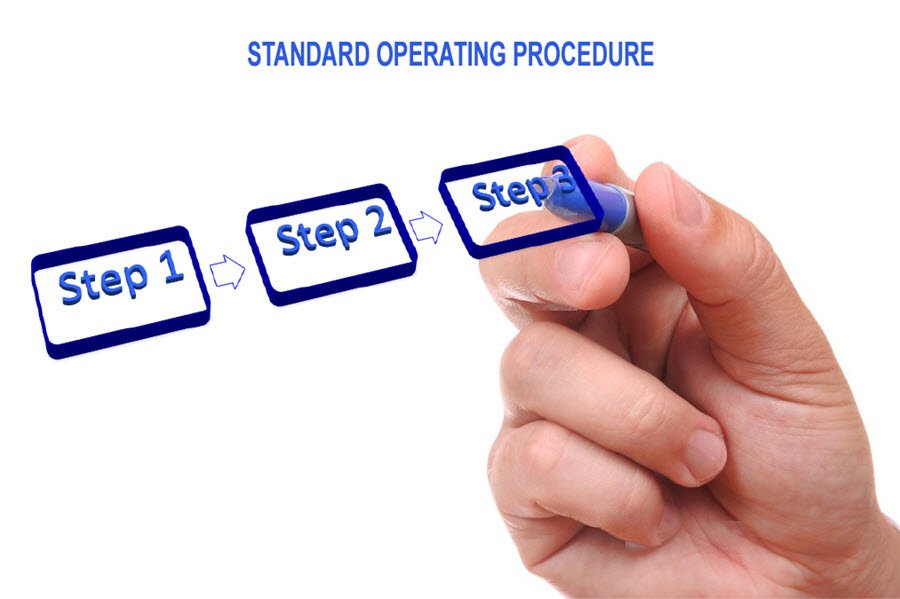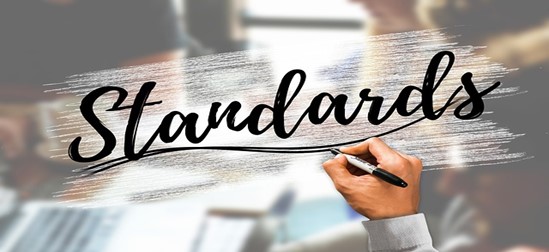
The Seven Different Types of SOPs
THE SEVEN DIFFERENT TYPES OF SOPS
We like to think of SOPs, or Standard Operating Procedures, as the structural support of a building. No matter where you work or what industry you work in, SOPs are an essential group of documents for every organization. Hence, we’d hazard a wager that you’ve already heard the term floating around the workplace.
But just how familiar are you with all of the different types of SOPs? And can you explain their purposes without a covert web search?
Whether you’re just diving into learning about the different types of SOPs and their correlating purposes or consider yourself an SOP savant, there’s no better time than now to buff that big ol’ brain of yours. (You might even say there’s no better time to sop up some knowledge. Wink.)
Let’s get into it!
What is a Standard Operating Procedure?
First thing’s first: An SOP is a business’s documented set of instructions or standards that help guide employees in a variety of ways. For instance, an SOP might outline company policies or employee expectations. Alternatively, an SOP might provide step-by-step documentation of a technical work process.
As we’ll get into below, the specific guidance detailed in the SOP is determined and indicated by its type.
How many different types of SOPs are there?
Before we continue, it’s important to note that there isn’t one true answer to this question.
That’s because there are multiple ways to group and categorize the various SOPs–and every business does things differently.
For our purposes, we’ve organized the different types of SOPs into seven categories.

The Seven Different Types of SOPs
- Guidance Documents
- Training Materials
- Workflows and Process Overviews
- Explanations of Practices
- Work Instructions
- Supporting Documents
- Documentation of Records
Although the guidance provided in each of the following SOP types have different scopes, it’s important to understand that they nevertheless all share a common feature: Meaning, you’ll find various notes on standards and best practices to pay attention to and follow throughout all of the SOP documentation.
Now let’s take a closer look at each type!
1. Guidance Documents
The purpose of guidance SOPs is right in the name: They provide overarching guidelines for the entire business. Think of them as reference materials for the company, outlining the business’s business philosophies, policies, and rules.
This type of SOP can include ethical statements as well as legal information detailing the relevant regulations and requirements. As such, guidance SOPs can also include compliance documents from different regulatory agencies, like the Federal Trade Commission or the Food and Drug Administration.
2: Training Materials
Can you guess what the purpose of this type of SOP is? You guessed it!

It’s informative materials for business employees. The thing about training materials, however, is that the documentation is specifically tailored to teach the reader.
So, while guidance SOPs might include some dense legal documentation full of jargon that not all readers will understand, training SOPs are designed for everyone to understand.
Can you think of any training SOPs? Examples include employee expectation documents, workshop documentation, interactive materials, and comprehension quizzes.
3: Workflows and Process Overviews
Even though we’ve grouped process overviews and workflow documentation together into one type of SOP, they’re not actually the same thing. However, they are closely connected and refer to overlapping information.
Workflows
Workflows are more general than process overviews and provide a high-level visual representation of the progression through a sequence of stages or events. Think of flowcharts, Kanban boards, or instructional recipe diagrams.
Process Overviews
To put it simply, process overviews are basically just a workflow written out. However, process overviews provide more detail and specific insights than a workflow does.
For instance, say your business has a workflow SOP representing the general process of adding a feature to a product. The correlating process overview, however, includes a more low-level breakdown of the process steps and definitions of individual responsibilities, and might even refer to (or digitally link to) some of your business’s other SOPs.
So, instead of an instructional recipe diagram, think of a detailed recipe fully written out.
4: Explanations of Practices
This type of SOP might seem a little bit like an oxymoron, but it makes sense once you pull it apart and digest it! Documentation of practices offers further–but general–information about specific sections of a process. The key term to pay attention to here is general.
In other words, this type of SOP provides informational descriptions in order to ensure employees have a general understanding of a process or related topic.
Let’s return to our example of your business’s workflow, which depicts the process of adding a feature to a product.
A correlating practices SOP might give an overview of the tasks and actions each team is responsible for throughout the process.
Alternatively, it might provide a general description of the steps involved in the process.

5: Work Instructions
Narrowing in scope, work instruction SOPs are much more specific and detailed than SOPs that document practices. In fact, work instructions are often considered to be the most granular form of SOPs. Work instructions provide step-by-step instructions that describe exactly how to perform a task. Because they’re so specific and narrowly scoped, work instructions typically target the actions of just one individual (as opposed to a team).
Think of instructions that include screenshots on how to create a new account, or a list of steps detailing how to perform maintenance on a piece of equipment.
6: Supporting Documents
For this type of SOP, we’re zooming out in focus from work instruction SOPs. The purpose of supporting documents is simple and straightforward: They represent additional resources employees can use to support their work. We like to think of supporting documents as SOPs for SOPs.
For instance, let’s say you’re onboarding at a new company. As you move through the business’s SOP outlining employee expectations, you might find yourself referring to a company-specific glossary to support your comprehension and progress. Other supporting SOPs include company forms, checklists, and design drawings.
7: Records
We’re always seeing reminders to keep a copy of documents for recordkeeping purposes, and there’s a reason why–it’s important! But when it comes to this type of SOP, we’re not just talking about keeping a copy of an appointment confirmation, we’re talking about documentation of business activities. This type of SOP includes documentation of an executed procedure and its results, work orders, project reports, legal records, and so much more.
Create or Improve SOPs with The Writers For Hire
Have we been hogging the spotlight? Well, now it’s your turn! Our team at The Writers For Hire is dying to know:
How would you describe the state of your business’s SOP documents?
When was the last time they were updated?
Don’t fret! We know you’re busy and hard at work, and we know just the team of talented writers to help you add robust SOPs to your list of accomplishments. Reach out to The Writers For Hire for more information!
Related Content
- 0 Comment
Subscribe to Newsletter
- How Can SharePoint Be Used To Organize and Disseminate SOPs?
- Planning the Perfect Genealogy Research Trip: A Step-by-Step Guide
- From Silly to Awesome: How Words Change Meaning Over Time
- The Psychology of Font Choice: How Typography Impacts Content Engagement
- How to Distribute SOPs for Maximum Usability






